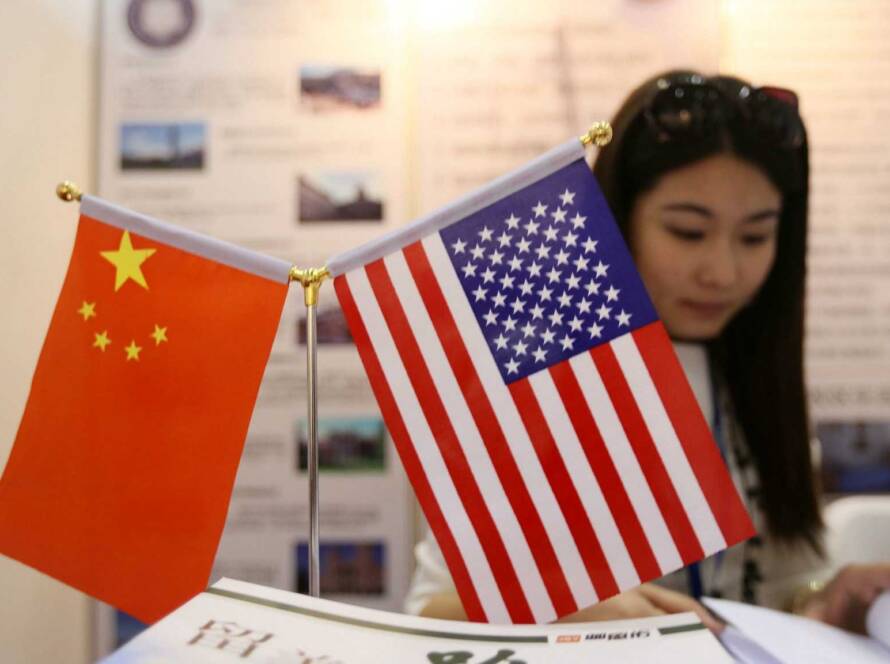By Kasun Thilina Kariyawasam
Many people have benefited from the ancient Chinese silk road, which connected large parts of the world. When we think of the Silk Road, we immediately think of silk, porcelain, and various precious stones. However, the Silk Road was also a route for countries to share knowledge and technology. Cotton weaving was invented in China and spread throughout the world.
The compass was invented in China and spread throughout the world via the Silk Road. The art of making sugar was invented in India and later spread to China. The most advanced mathematical and scientific knowledge in the Middle East was acquired by the Chinese and the rest of the world via the Silk Road.
As a result, the technological flow via the Silk Road is not a new phenomenon; rather, it is an ancient phenomenon. There is really no doubt that China is a technological powerhouse today. Chinese technological advancement is on par with that of most Western countries, and in some cases, China is ahead of Western countries.
The Belt and Road Initiative (BRI), China’s signature flagship project and a central pillar of diplomacy, was launched in 2013. It includes the development of various maritime and land-based infrastructure to facilitate not only a trade route but also a commercial collection mechanism.
The Central Leading Small Group for Cybersecurity and Informatization 40, led by Xi Jinping, held its first meeting in February 2014, four months after the BRI’s official launch. The term “Information Silk Road” was first used in a white paper on the BRI in March 2015.
“We should jointly advance the construction of cross-border optical cables and other communications trunk line networks, improve international communications connectivity, and create an Information Silk Road. We should build bilateral cross-border optical cable networks at a quicker pace, plan transcontinental submarine optical cable projects, and improve spatial (satellite) information passageways to expand information exchanges and cooperation.”
As digitalization has its own sphere, the Digital Silk Road was intended to be the digitalization of all the infrastructure built by the Belt and Road Initiative. Digitalization enables rapid and efficient material movement within the BRI, as well as the creation of new commercial spaces in cyberspace.
The Digital Silk Road (DSR) has several paths for advancement, including smart city development, the creation of a digital currency, submarine cable laying, data center construction, satellite communications development, and so on. There are two distinct layers to the DSR’s development.
The first layer is the hard layer, which includes 5G networks, IoT networks, data warehouses, and so on. The second layer is the soft layer, which is made up of digital platforms built on top of the existing cyber network. This layer includes e-commerce, e-governance, and financial technology, as well as security information systems and cloud data centers.
China and seven other countries have launched the “Belt and Road Digital Economy International Cooperation Initiative.” The majority of them are in Asia and the Middle East, including Serbia, which is a candidate for European Union (EU) membership. Saudi Arabia stands out among Middle Eastern countries as an enthusiastic partner of the DSR; it has the desire, money, and political will to streamline its digital infrastructure.
To strengthen the construction of the DSR, China has signed cooperation agreements or memorandums of understanding with 16 BRI partner countries. It has also signed 85 agreements for standardization cooperation with 49 countries and regions.
According to the BBC, Chinese companies have spent an estimated USD 200 billion on developing the Silk Road’s digital dimension.
Digital infrastructure
Next-generation technologies
E-commerce and digital free-trade zones
Cyber diplomacy and internet governance
13 new megacities will emerge in the developing world by 2030. Currently, nearly half of the world’s population lacks internet access. Closing the digital divide could cost USD 428 billion, and fully realizing the benefits of the global digital economy could cost even more, with additional investments totaling up to USD 701 billion per year through 2025.
For a variety of reasons, China is well positioned to assist developing countries in closing this gap by providing affordable and appropriate technologies as well as the necessary funding. It is ahead of the other countries in this game. They can catch up and do something similar to what the United States and the European Union have begun to do, either independently or in collaboration with partner countries.
Any country that wishes to close the industrial gap and the overall economic advancement gap from the rest of the digitalization provides a leapfrogging opportunity for countries with industrial gaps. Countries benefit from digitalization by increasing industrial productivity.
Sri Lanka clearly lags behind the majority of advanced economies. digitalization improves resource allocation, and automation accelerates business processes. Additionally, digitalization allows for better scaling up of opportunities to business processes.
Broadband coverage is the foundation of the digital layer. Sri Lanka, like the majority of South Asian countries, has a number of shortcomings in its broadband layer. Not only does the broadband spread not completely cover the island, but the broadband bandwidth is extremely low to perform industrial level operations.
As there are cutting-edge broadband providers in China, the Digital Silk Road provides a solution to this problem. Chinese firms like Huawei are at the forefront of global telecommunications solutions. They are the fastest 5G providers, and they provide a very compelling and cost-effective solution to 5G implementation. Huawei, for example, not only provides 5G hardware solutions, but also a wide range of industrial eco system solutions.
These pre-made industrial applications include logistics solutions, industrial production systems, and so on. Which is somewhat tailored for countries like Sri Lanka, as digital eco system solutions in countries like Sri Lanka are not designed to meet global cutting-edge standards.
The Sri Lankan government has recently communicated in various forms that it requires rapid export-oriented industrialization. There is no doubt that Sri Lanka should increase its exports in the short term. The logistics systems in China are among the most advanced in the world.
Chinese logistics systems include everything from freight management systems to e-commerce platforms. DSR provides an opportunity for Sri Lanka to obtain cutting-edge logistics management technology. Second, by syncing with the Chinese behemoths, Sri Lankan exports gain access to the world’s largest consumer market.
The shortcomings of the Sri Lankan state sector are clearly visible. This is due to a variety of factors. The public sector is either understaffed or underutilized. Second, supervision and surveillance of their services are not properly established. Such flaws can be mitigated by implementing digital solutions.
The lack of data availability makes decision making somewhat difficult. When appropriate data is available, new innovations and policy paths can be revealed. In addition, a lack of data prevents the state from expanding its institutional functions.
The Chinese government must provide services to nearly 1.4 billion people. The Chinese population has a wide range of service requirements. To provide that, the Chinese government managed to build a strong state capacity. Its digital systems are a component of that state arm.
E-Governance
One of the motivations for the DSR is e-governance. There are numerous E-government applications that Sri Lanka can use to address shortcomings in state services. Such applications include E-Tax filling, which allows for more streamlined government tax facilitation. This allows for more efficient tax collection and the prevention of tax fraud.
The digital ID system is the most important of all. Digital ID systems authenticate citizens in cyberspace and enable various types of industry stakeholders to build online human resource management and human authentication mechanisms. This also allows citizens to gain access to various forms of online access to state services. Digital ID systems also allow the government to provide more targeted welfare services.
E-governance systems introduce new data-driven policy analysis layers, allowing states to make more empirically driven policy decisions. State communication is a component of government service. In Sri Lanka, however, it is currently out of sync.
As a result, state communication has become less effective. With the assistance of DSR, the state can create a more effective and less intrusive government communication mechanism.
In Sri Lanka, there are heated debates about the transparency of government activities. With E-governance, the government can create a digital layer that allows for greater public transparency in its dealings with constituents and other types of external dealings.
The central bank digital currency (CBDC) is another type of E-governance. CBDC allow the government to conduct more targeted fiscal operations. CBDC improves credit infrastructure for the monetary arm.
Education and healthcare are two of the most important functions of any government. E-governance enables E-Healthcare services for its citizens, and E-learning allows the state to better facilitate education for its citizens. Some of these platforms have already been developed in Sri Lanka. However, they do not meet global standards.
DSR addresses the digital diplomacy layer as well. Digital diplomacy is a new layer of diplomacy that enables faster, more transparent, and democratic diplomacy mechanisms. For poor countries like Sri Lanka, political affairs are currently offline, opaque, and asymmetrical. Digital governance entails the digitalization of external affairs, the automation of dispute resolution, digitalized international supervision, and so on.
As cyberspace develops, there will be large-scale data transfers, which will raise issues of trust and due diligence. To address such issues, global standards for stakeholders should be established. DSR provides the primary theoretical framework for such a mechanism. Sri Lanka should seize digital dominance if it wants to deepen and advance its diplomatic relations.
Smart Infrastructure
Smart infrastructure is one of the DSR’s most stressed segments. A smart infrastructure is made up of a variety of IoT and smart devices that are linked together to provide the best possible flow of information and data. In China, a wide range of IoT applications are already in place, providing solutions to agriculture, industry, and the service sector. These IoT networks increase production productivity while decreasing business flow friction.
Smart infrastructure connected industries are robust, and business cases will scale up faster than in traditional industrial settings. Highly data-driven business decisions reduce risk in the business and improve forecasting. Such business applications are already included in the DSR framework. This allows Sri Lankan agriculture, industry, and the service sector to advance from their current level to a world-class level.
Smart infrastructure will be used in agriculture to monitor the production process from harvesting to the end consumer. It will reduce friction and increase the efficiency of the process. Data layer research various types of agricultural monetization capacities. Data-driven smart agriculture improves their ability to create better collateral for credit.
The digital layer in industry will rapidly increase productivity. Data-driven decision-making will improve the industry’s business intelligence. The digital-driven industry 4.0 will bring Sri Lankan businesses up to global standards. As business processes become more transparent, data-driven business processes enable industries to find horizontal and vertical business advancement.
Moreover, the DSR is packaged with the Chinese Beidu constellation system. The Beidu system allows for the synchronization of business processes with production forces. It assists in the provision of services such as navigation, spatial allocation, and forecast and real-time climate. Satellite communication also offers a redundant communication layer that can supplement the existing communication layer.
Kasun Thilina Kariyawasam is a macroeconomist who works for the fund management sector in Sweden. He can be reached at kasunkt@hotmail.com.
Factum is an Asia-Pacific focused think tank on International Relations, Tech Cooperation, Strategic Communications, and Climate Outreach accessible via www.factum.lk.
The views expressed here are the author’s own and do not necessarily reflect the organization’s.


